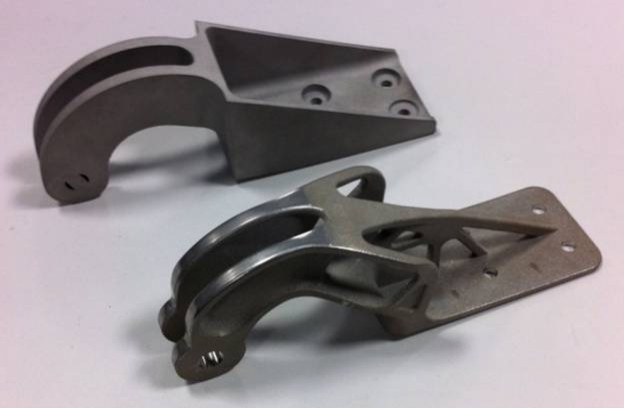3D Printing Goes Metal: European Space Agency Shows Off Printed Parts That Can Be Used In Space

NASA and other space agencies are looking to use 3D printers in space, but one limitation is the ability to create plastic parts. But the ability to print metal objects in space could open up even more industrial possibilities, and the European Space Agency showed off its ability to 3D print with metal on Tuesday.
The AMAZE (Additive Manufacturing Aiming Towards Zero Waste & Efficient Production of High-Tech Metal Products) Project was announced earlier this month, and on Tuesday the ESA demonstrated the ability to print 3D with metal. In an exposition at the London Science Museum, the space agency displayed 3D-printed metal hinges, reports the BBC. The AMAZE project started in January and already has 28 partners, including academic institutions and companies like the Airbus maker European Aeronautic Defense and Space Company N.V. (Euronext:EAD). Factories are currently being established in France, Germany, the UK, Norway and Italy for mass production using 3D printers.
According to the ESA, 3D printing can provide a cost-effective alternative to traditional manufacturing of industrial parts. “This novel technology offers many advantages. 3D printing, formally known as additive manufacturing, can create complex shapes that are impossible to manufacture with traditional casting and machining techniques. Little to no material is wasted and cutting the number of steps in a manufacturing chain offers enormous cost benefits,” said the space agency in a statement.
David Jarvis, head of new materials and energy research for the ESA, said at the presentation that millions of euros could be saved on projects such as building a satellite while reducing the amount of waste from manufacturing methods.
The ESA said the metal parts can withstand temperatures exceeding 1,000 degrees Celsius (1,832 degrees Fahrenheit). At the presentation at the London Science Museum, tungsten alloy parts were shown to withstand temperatures of 3,000 degrees Celsius (5,432 degrees Fahrenheit), reports the BBC. The process to 3D print with metal is similar to normal 3D printing. Software determines the shape of the part while a laser creates the design in metal powder, heat is applied and the dust hardens, creating the first layer of the object. This process is repeated for several layers until the part is created.
Jarvis granted that some problems remain in 3D printing with metal. “One common problem is porosity - small air bubbles in the product. Rough surface finishing is an issue too.” The AMAZE project has been able to print airplane wing sections as well as jet engine parts, and the ESA hopes to one day print a satellite as one piece.
© Copyright IBTimes 2024. All rights reserved.












